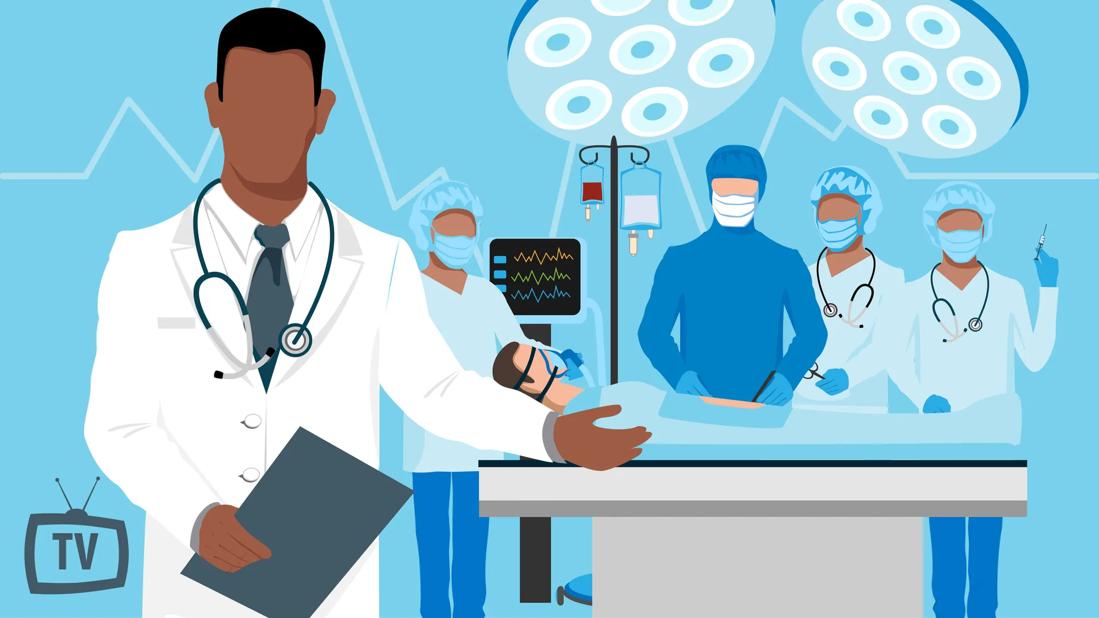They’re fun to watch, but medical TV shows are often more hype than reality — and you shouldn’t rely on them for factual medical information

TV medical dramas have kept us glued to the screen for decades. There’s just something about healthcare professionals in scrubs that makes us want to tune in to shows like, well, Scrubs.
Advertisement
Cleveland Clinic is a non-profit academic medical center. Advertising on our site helps support our mission. We do not endorse non-Cleveland Clinic products or services. Policy
“I was hooked on ER,” confesses family medicine specialist Neha Vyas, MD. “I watched for the suspense and the relationships — and, of course, George Clooney.”
Dr. Vyas was pursuing her medical degree when ER led the primetime TV ratings. But she didn’t rely on Dr. Ross (Clooney’s character) to help her understand medical terms or procedures.
“It was entertainment,” she says. “I knew the scenes were heavily dramatized and often medically inaccurate.”
Wait … what? Does that mean you can’t trust what Dr. Meredith Grey says on Grey’s Anatomy?!
“Nobody should get medical advice or information from a TV show,” Dr. Vyas declares. It’s not that those actors in scrubs are intentionally trying to mislead you. But their primary goal is to entertain — not to cure what ails you.
The line between fact and fiction on medical TV shows wasn’t always so blurry. There was a time when production companies went to great lengths to ensure medical shows more closely mirrored reality.
When the TV series Medic aired in the 1950s, the producers sought the advice of a group of Los Angeles physicians. The providers reviewed scripts and weighed in on big and little details, including what car the doctor in the show should drive.
Advertisement
Soon, the American Medical Association (AMA) formed the AMA Advisory Committee for Television, Radio and Motion Pictures. For 30 years, the AMA committee worked with production companies to:
After the committee disbanded in the 1980s, production companies began hiring individual providers as medical consultants. But producers aren’t required to consult any medical experts, which may explain why medical TV shows today take so many liberties.
One way that medical TV shows crank up the drama and keep us watching is through steamy make-out scenes in the on-call room. The shows also like to play up medical errors that harm patients.
One study review of eight different medical TV series found that the shows exaggerated the number of medical errors compared with what happens in real life. Combined, the shows depicted 242 medical errors, which is about six medical errors for every hour of TV viewing.
Surgical mishaps and misdiagnoses were the top medical errors. In almost half of the incidents, the fictional healthcare team tries to hide the error from patients. The study’s researchers speculate that this overdramatization of medical errors on TV may cause viewers to develop unnecessary anxiety.
“Patients who believe what they see on TV may start to lose trust in their medical team,” Dr. Vyas says.
You likely can’t trust what you hear on “nonfiction” medical talk shows like The Dr. Oz Show or The Doctors either. One study found that these shows offer questionable medical advice: Only one-third of the recommendations from The Dr. Oz Show and about half of them on The Doctors had enough scientific evidence to back them up.
These research findings don’t surprise Dr. Vyas.
“Medical TV shows oversimplify and gloss over a lot. They rarely reflect what medical teams do in real life,” she says. “There are never 20 team members caring for a patient or the same doctor seeing a patient from the emergency room through surgery. And a medical student is probably never going to save the day.”
While medical TV shows might not win Emmy Awards for accuracy, they don’t try to confuse you by making up fake names of diseases, medications or procedures. Many of the terms they use may be a mouthful and sound confusing, but they’re used by real healthcare professionals, too.
Here’s a quick primer on common jargon that you may hear on medical shows and in real-life hospital hallways:
Advertisement
It won’t harm your health to escape reality for a while by tuning in to watch your favorite hot doctor or nurse on TV. Just know that life is probably less sexy for your real-life healthcare team.
“Doctors spend a lot of time advocating for patients, filling out charts and making phone calls,” Dr. Vyas shares.
And, of course, be skeptical of overly dramatic storylines that are sure to have medical inaccuracies.
“Always get your medical information from a legitimate source, like your healthcare provider or a respected medical system,” she urges.
Watching a medical TV show for entertainment — not a substitute for medical advice — is what this doctor orders.
Advertisement
Learn more about our editorial process.
Advertisement

It isn’t a recognized mental health disorder, but research shows that problematic social media use can negatively affect your mental health, self-esteem and sleep

This trendy practice may boost your physical and mental health — but done incorrectly, it could make things worse

Embrace mindfulness and practice checking your phone consciously, not compulsively

Identify your triggers, set ground rules for your break and start practicing mindfulness

Too much screen time and unrealistic expectations and perceptions and can lead to an increased risk of anxiety and depression

Talk to your child about the dangers these viral videos pose to their health

The answer comes down to your child’s maturity

Frequent smartphone use can lead to painful issues

Babies can get congested easily, but you can calm their cough by keeping them hydrated, using nasal drops and running a humidifier

Weight loss may cause loose, sagging skin and muscle loss to your rear

Several conditions, like vitiligo and fungal infection, can cause a loss of pigmentation, leading to white spots or patches on your skin